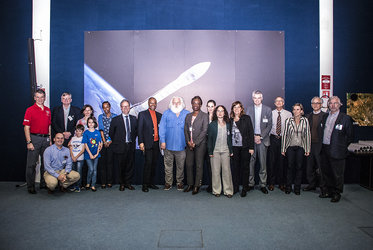ESA and Asian Development Bank join forces
ESA and the Asian Development Bank have signed an agreement to collaborate over the next five years to use information from space to support sustainable development.
The Bank aims to help countries in Asia and the Pacific region reduce poverty and improve the quality of life of their citizens. The Bank assists its members and partners by providing loans, technical assistance, grants and equity investments to promote social and economic development.
It has already been demonstrated that using information from satellites can help these efforts. Since 2013, ESA has completed 12 different activities that support a range of projects run by the Bank.
One such project focused on helping to develop public transport in Baku in Azerbaijan and Peshawar in Pakistan.
Information from satellites was used to assess the state of different transport infrastructure such as roads, railroads, ports, waterways and airports, and show how it evolved over time. In addition, land-use information and population distribution around key access points were provided.

David Margonsztern, Asian Development Bank Senior urban development specialist, said, “Satellites give us the data without having to go into the field and allowed us to scan a ‘corridor’ area completely. Everything in the corridor from one facade to the other was shown perfectly in the satellite images.
“This also allowed us to analyse how the land is used around stations that we are planning. The outcome of the collaboration was very good.”
With initial activities such as this paving the way for future developments, an agreement to extend this kind of collaboration over the next five years was signed today by Gil-Hong Kim, the Asian Development Bank’s Senior Director and Chief Sector Officer of the Sustainable Development & Climate Change Department, and Josef Aschbacher, ESA’s Director of Earth Observation Programmes.

The next step will be to begin scaling up earlier projects with larger, regional demonstrations. This will be coupled with a more strategic approach focusing on 10 thematic domains of international development where Earth observation can deliver key information.
Josef Aschbacher said, “In the context of the new sustainable development goals, we see increasing emphasis placed on using Earth observation to address today’s biggest societal challenges such as population growth, food security, water and energy.
“A key aspect in this work will be the close collaboration with both the multilateral development banks and their client countries in co-designing and implementing activities together, to establish Earth-observation-based products and services used as ‘best-practice’ environmental information.”








